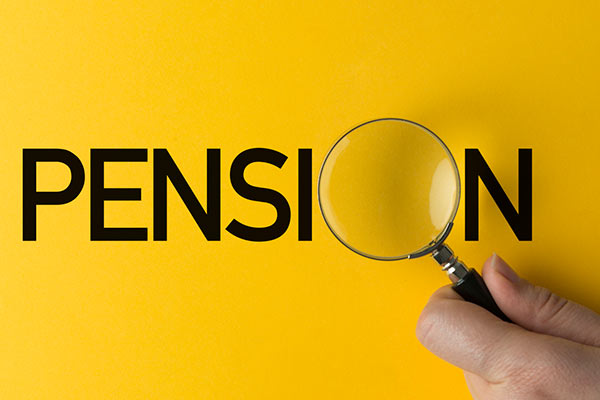Six ways Labour may shake up the pension landscape
Craig Rickman outlines the key retirement considerations for Labour as the party secures a landslide victory at the 2024 general election.
5th July 2024 13:11
by Craig Rickman from interactive investor

Somewhere on the new government’s bulging to-do list is how to revamp the retirement landscape.
From clarifying the state pension’s future to refining the workplace regime, Prime Minister Keir Starmer has some big calls to make over the current Parliament, which could impact our finances for decades to come.
It appears Labour is well aware of the task at hand. The party’s manifesto included plans to review the current pensions and savings system to “improve outcomes for savers”.
- Invest with ii: Open a SIPP | Best SIPP Investments | SIPP Cashback Offers
So, which areas might the government hone in on? And will any reform likely prove radical or moderate?
1) Auto enrolment contribution increases
It’s fair to say auto enrolment has been an overwhelming success since the policy launched in 2012. Pension scheme participation among eligible employees ticked up from 56% in 2012-13 to 86% in 2021-22.
And this inertia has spilled into non-eligible employees, with participation here more than doubling from 16% to 35% over the same period.
Under current rules, if you pay 5% of your salary into a pension (within certain thresholds) your employer must pay 3%, bringing the total to 8%.
- What Labour’s landslide means for investors
- Sign up to our free newsletter for share, fund and trust ideas, and the latest news and analysis
- Seven pension tips I learned as a financial adviser
But worries persist that the minimum contribution levels are too low, with those who stick to them running the risk of reaching old age with inadequate savings. As such, there have been strong calls from various quarters to raise them, with suggestions on the combined employer and employee contribution ranging from 12% to 16%.
However, this is an area the new government must handle with care.
Aggressive contribution hiking could cause opt out numbers to rise – especially with the cost-of-living crisis set to persist for some time yet, despite cooling inflation. It would also create an additional financial burden for businesses, which in April 2023 were slapped with bigger corporation tax rates.
If change here does materialise, minimum auto enrolment contributions levels are likely to tick up over time in a similar way to when the policy was introduced.
2) Clarifying the state pension’s future
In a boost for retirees, Labour has committed to the triple lock, which guarantees the state pension uprates annually by the highest of inflation, wage growth or 2.5%.
The value of this policy cannot be understated. Due to 40-year high inflation and strong wage growth, the triple lock has delivered increases of 10.1% and 8.5% in the past two years.
But the policy’s sustainability has come under scrutiny – maintaining it will cost around £1.5 billion per year by 2029–30, according to forecasts.
- Does it make sense to defer my state pension?
- When paying your state pension into a personal pension makes sense
There are also concerns about the state pension more broadly. The state pension age is currently 66, but will rise to 67 in 2028, and is scheduled to hike to 68 in 2046 – though the new government may choose to accelerate the timetable.
Earlier this year, the International Longevity Centre (ILC) claimed the state pension age needs to rise to 71 by 2050 to remain affordable.
Whether the Labour Party will entertain this suggestion is another matter. But either way, some clarity on the future of the state pension wouldn’t go amiss.
At a full amount of £11,502 a year, the state pension alone may not be enough to fund a financially comfortable retirement, but it still provides a valuable source of income for the vast majority of pensioners.
3) Will ‘pension for life’ get the green light?
Labour made no mention of “pension pot for life” in its manifesto, but it will inevitably form part of its pension landscape review.
The idea was introduced by then-Chancellor Jeremy Hunt at his Autumn Statement and could prompt the biggest shake-up to the pension landscape in decades.
In short, “pension pot for life” would give you the right to ask your employer to pay into a pension of your choice, instead of being forced to join your company’s scheme.
- Seven steps to get ahead of chancellor’s ‘pension pot for life’
- The cost of not knowing your portfolio fees
The upsides include easing the administrative headache that comes with managing several pension pots and greater control over where savings are invested.
The policy has certainly proved divisive. Some feel that it may dampen rather than stimulate engagement. There is also a great deal still to iron out, which the Labour Party will take the baton on.
Even if Starmer gives “pension pot for life” the green light, it may take several years before the existing workplace regime is overhauled and replaced.

4) Universal pension tax relief
The idea of a flat rate of pensions upfront tax relief has been floated for the best part of a decade.
Those in favour suggest the current system - where savers get relief at their marginal rate of tax on pension contributions, which can be up to 45% - should be scrapped and replaced with a universal rate of somewhere between 30% to 33%.
Such a move wouldn’t be cheered by all savers, of course. Anyone who earns below £50,270 – so those in the 20% tax band – would benefit, while those in 40% and 45% tax brackets would lose out.
The facility to get tax relief at your marginal rate of tax (in other words, (the rate of tax you pay on your next pound of earnings) is one of the main attractions with pensions, as this recent case study aptly illustrates.
Those against universal pension tax relief include Professor Philip Booth, academic and research director at the Institute of Economic Affairs, who in 2016 said: “Introducing a flat rate of pensions ‘tax relief’ would be devoid of any economic rationale and prohibitively complex in practice. It would also necessitate further complex legislation to prevent anomalies arising.”
5) Support for self-employed workers
One of the big challenges facing the pension sector is to engage more self-employed workers to save for their long-term future.
In 1998, almost half (48%) of the self-employed population paid into a pension, but 20 years later this plummeted to just 16% - a quite remarkable decline.
There are obvious reasons why the self-employed might be choosing to swerve pensions.
For starters, the money is tied up until age 55 (rising to 57 in 2028), which may not lend to those with irregular and fluctuating income who need to manage cash flow. Anecdotally, some freelancers and small business owners favour individual savings accounts (ISA), which can be accessed at any time.
- Five ways to build your wealth if you’re self-employed
- Self-employed? Here’s the best way to save for your retirement
- Brace your income for the self-assessment tax raid
In terms of solutions, the Fabian Society in 2022 urged Labour leader Starmer to expand auto enrolment to self-employed workers should he assume power.
The think tank proposed that a self-employed worker’s digital tax records would be linked to a pension account with 5% deducted from profits, complemented by a 3% government contribution. Like their employed counterparts, the self-employed would also have the right to opt out.
6) What next for pension allowances?
Whether Labour planned to reinstate the highly controversial pensions lifetime allowance (LTA) gathered plenty of column inches until recently.
The policy placed a cap on what your pension savings could be worth without being stung with a hefty tax charge but was scrapped by former Chancellor Jeremy Hunt from April this year.
However, just days before its manifesto was published, reports emerged that Labour had abandoned the LTA’s return, much to the relief of savers with seven-figure pension pots.
This came as a surprise, but in hindsight perhaps it shouldn’t have.
- How much help do you need when investing?
- Lifetime allowance’s return: keep calm and carry on contributing
Bringing back the LTA would be fiendishly complex and risks accusations of unfairness - especially as Labour was apparently eyeing up a carve out for some public sector workers, including NHS doctors, which would exempt them from the tax charges.
But it may be naïve to assume the long-term prospect of the LTA’s return has disappeared. We can’t rule out the policy being placed on the shelf, with ministers giving themselves more time to work out how to reintegrate it without upsetting the apple cart.
Alternatively, and more likely, Labour will turn its focus elsewhere.
All three annual allowances – standard, tapered and money purchase (MPAA) – increased from the 2022-23 tax year. The standard annual allowance was jacked up from £40,000 to £60,000, while the taper and MPAA both rose from £4,000 to £10,000 in a welcome move for savers.
If Labour has truly abandoned plans to resurrect the LTA, it may instead choose to reverse some of these increases to balance the books.
We’re likely to find out more at the new government’s first set-piece fiscal event, possibly the 2024 Autumn Statement in November. It’s possible a first Budget could be announced as early as 13 September, although it will likely be later given the Office for Budget Responsibility needs 10 weeks to produce a report.
These articles are provided for information purposes only. Occasionally, an opinion about whether to buy or sell a specific investment may be provided by third parties. The content is not intended to be a personal recommendation to buy or sell any financial instrument or product, or to adopt any investment strategy as it is not provided based on an assessment of your investing knowledge and experience, your financial situation or your investment objectives. The value of your investments, and the income derived from them, may go down as well as up. You may not get back all the money that you invest. The investments referred to in this article may not be suitable for all investors, and if in doubt, an investor should seek advice from a qualified investment adviser.
Full performance can be found on the company or index summary page on the interactive investor website. Simply click on the company's or index name highlighted in the article.
Please remember, investment value can go up or down and you could get back less than you invest. If you’re in any doubt about the suitability of a stocks & shares ISA, you should seek independent financial advice. The tax treatment of this product depends on your individual circumstances and may change in future. If you are uncertain about the tax treatment of the product you should contact HMRC or seek independent tax advice.